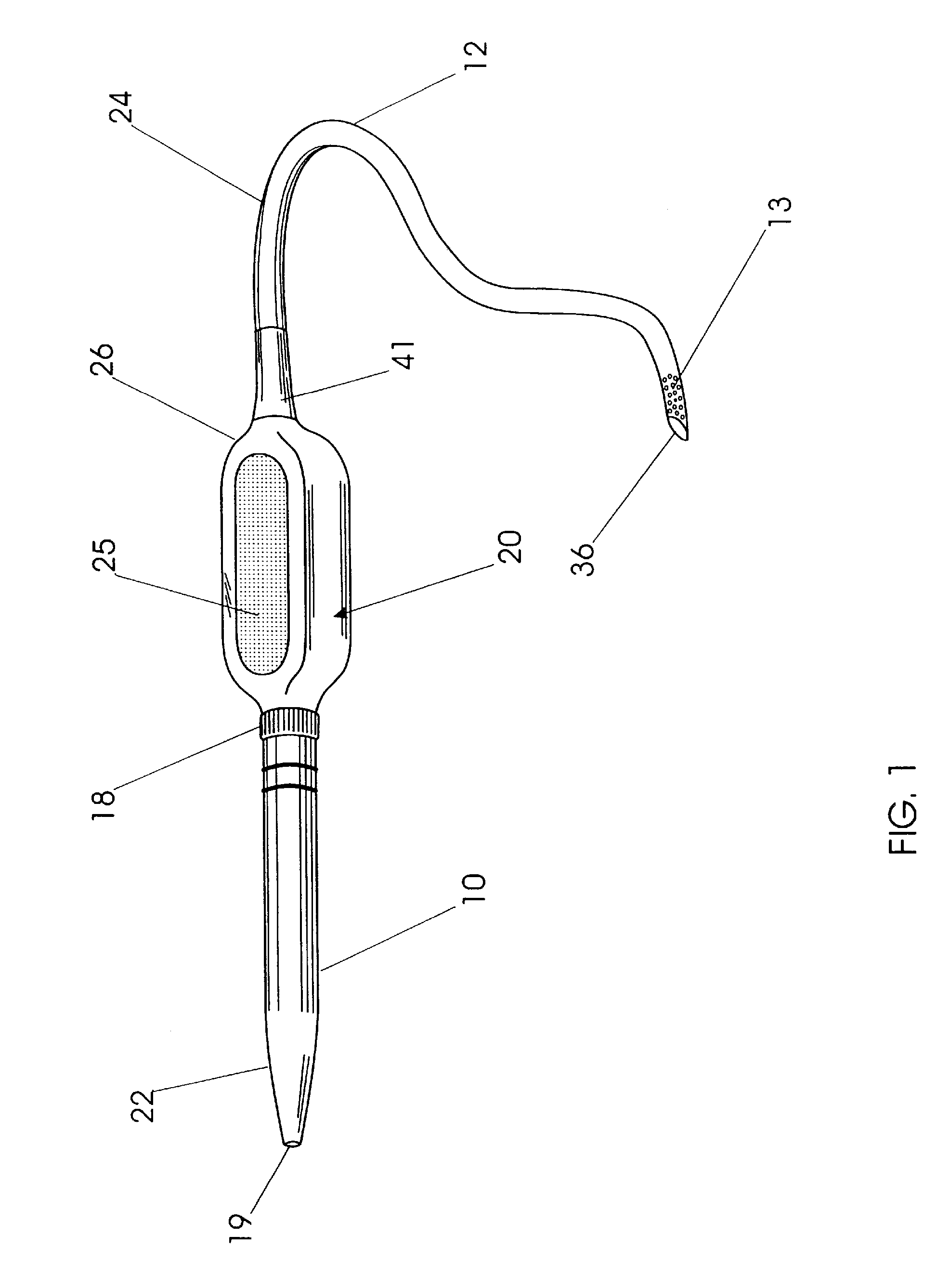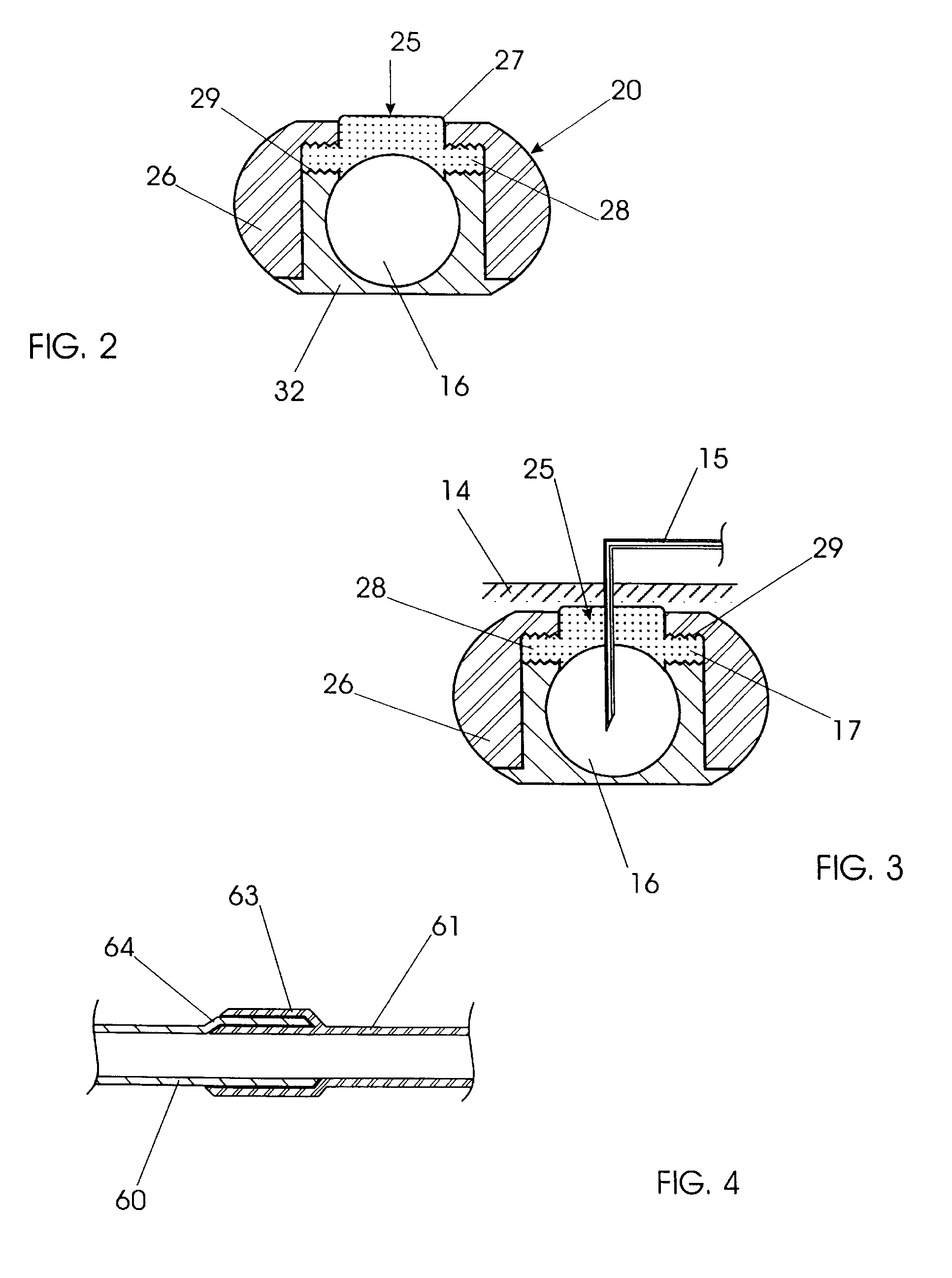Hemodialysis and vascular access system
a vascular access system and hemodialysis technology, applied in the direction of catheters, applications, other blood circulation devices, etc., can solve the problems of cumbersome living, cosmetically unappealing, and the failure of veins or shunts to enlarge and mature properly, so as to reduce turbulence and shear force, and improve longevity and performance.
- Summary
- Abstract
- Description
- Claims
- Application Information
AI Technical Summary
Benefits of technology
Problems solved by technology
Method used
Image
Examples
Embodiment Construction
[0035]Referring to the drawings the Squitieri hemodialysis and vascular system, as shown in FIG. 1, comprises a PTFE / dacron (or other synthetic or natural material) tube 10 of several centimeters in length which is attached at one end by means of a coupling 11 to a needle access site 20. Adjustable band 18 regulates the blood flow through the access site 20. The PTFE tube 10 is approximately 7 mm in diameter and transitions downward to an open end portion 19 approximately 4 mm in diameter.
[0036]The access site 20 includes an in line aperture 16, see FIG. 2, having a silicone tube 41 connected thereto at one end leading to a long flexible plastic / silastic / silicone tube 12 with transverse holes 13 along its free end. The number of holes 13 may vary within predetermined limits to achieve optimum results. The end 36 may be beveled for ease of insertion. This tubular arrangement functions as a subcutaneous connection between the arterial and venous systems. It may also be modified to all...
PUM
 Login to View More
Login to View More Abstract
Description
Claims
Application Information
 Login to View More
Login to View More - R&D
- Intellectual Property
- Life Sciences
- Materials
- Tech Scout
- Unparalleled Data Quality
- Higher Quality Content
- 60% Fewer Hallucinations
Browse by: Latest US Patents, China's latest patents, Technical Efficacy Thesaurus, Application Domain, Technology Topic, Popular Technical Reports.
© 2025 PatSnap. All rights reserved.Legal|Privacy policy|Modern Slavery Act Transparency Statement|Sitemap|About US| Contact US: help@patsnap.com



